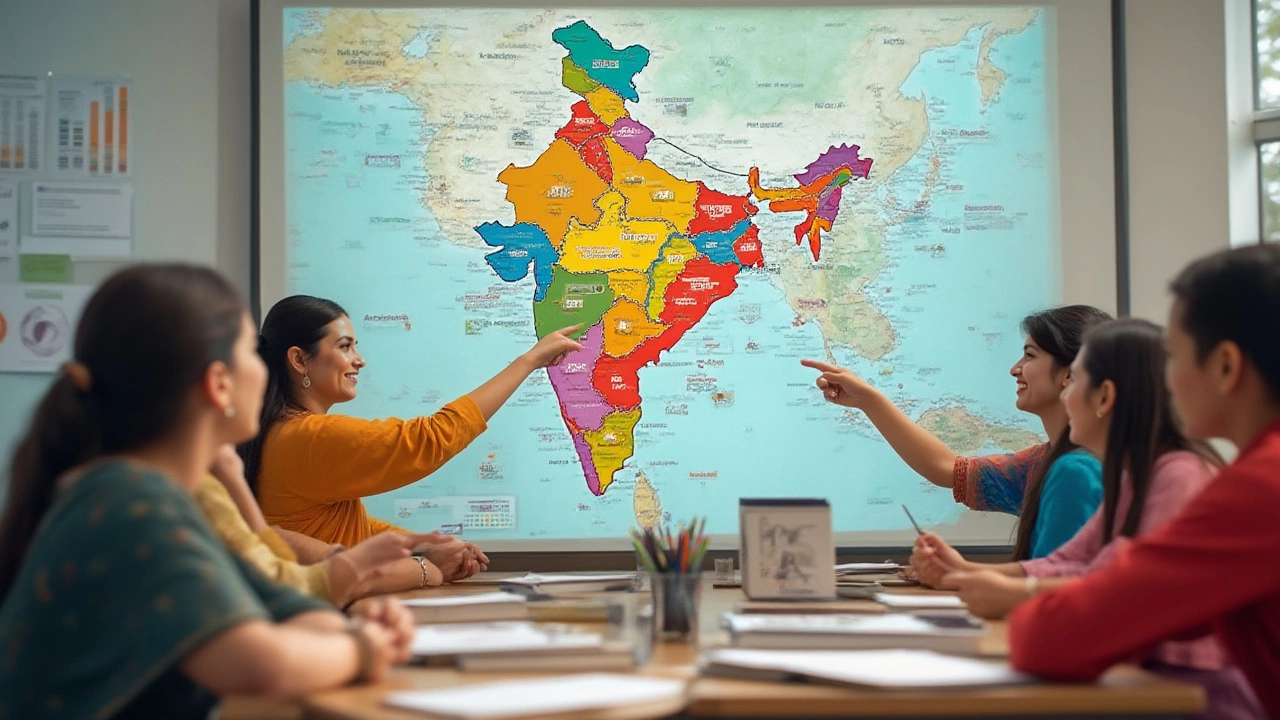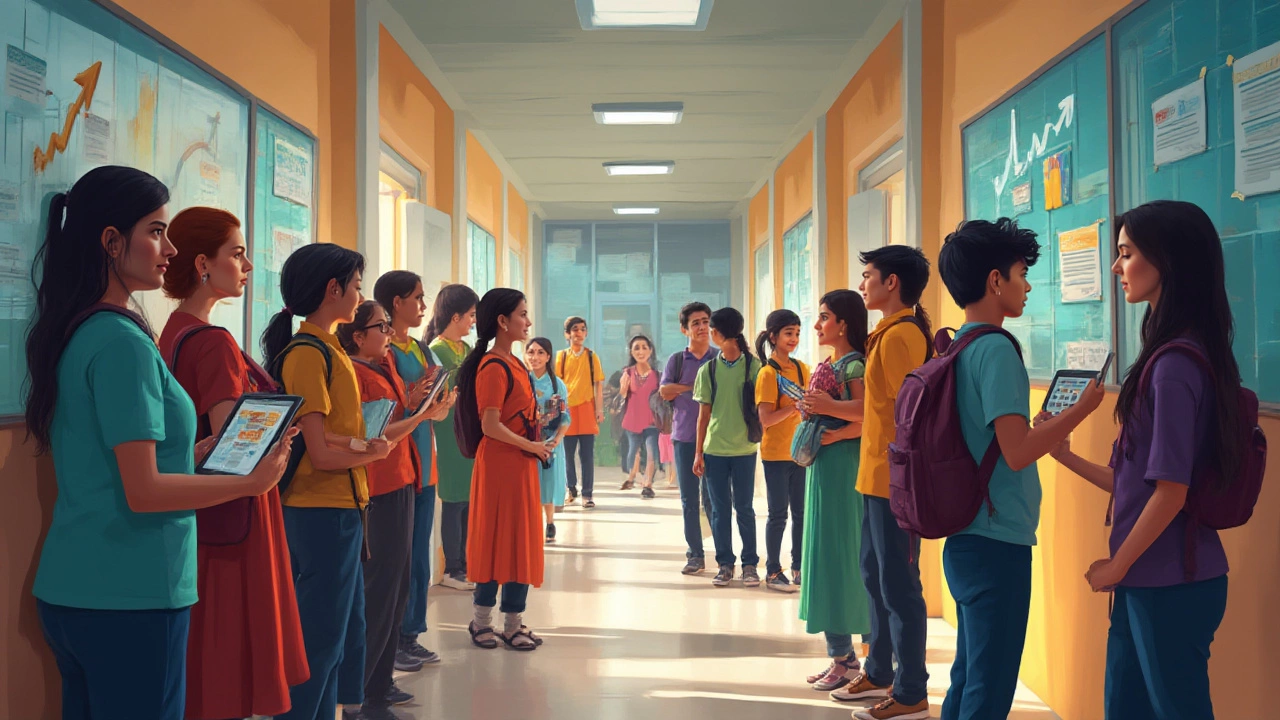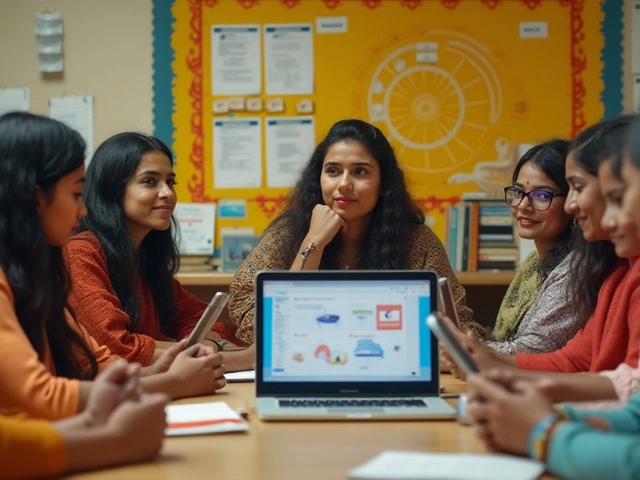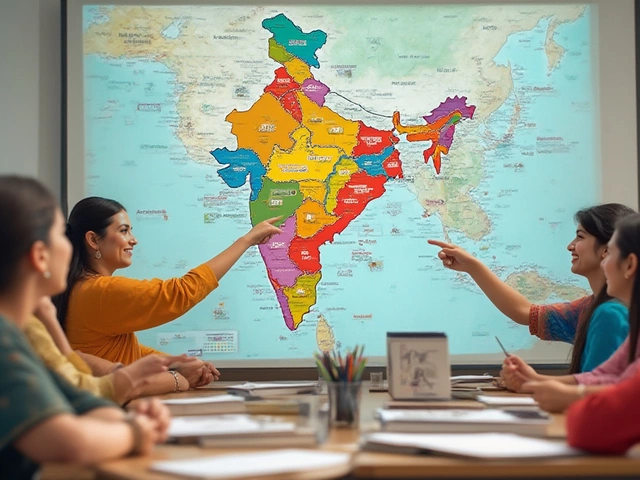
Ever wondered why some states in India churn out more CBSE toppers or why relocating families swear by certain regions for better school options? It’s no secret that the Central Board of Secondary Education (CBSE) is the gold standard for K-12 education in India. Still, not all states share the CBSE love equally. Some are CBSE hotspots, while others still lean on state boards. It’s not just about numbers—it’s about a rivalry shaped by population, urban sprawl, and a mad rush for competitive exams. And the answer to "Which state has the most CBSE schools?" actually says a lot about where education trends are heading in 2025.
The Winner Revealed: Which State Actually Has the Most CBSE Schools?
If you're placing bets on Uttar Pradesh, you’re right on the money. As of early 2025, Uttar Pradesh leads the country by a massive margin, clocking over 3,200 CBSE-affiliated schools according to the official CBSE Affiliation Portal. That’s not a little sprinkle—it's more than 13% of India’s total CBSE schools! Here’s what’s wild: Delhi, despite its reputation for quality education and student success, hovers at around 1,100 CBSE schools. Maharashtra isn’t far behind with about 1,500. Here’s the quick breakdown of the top five CBSE-rich states according to the CBSE’s 2024-2025 dashboard:
| State | Number of CBSE Schools (2025) |
|---|---|
| Uttar Pradesh | 3,250+ |
| Maharashtra | 1,460 |
| Delhi | 1,095 |
| Rajasthan | 1,050 |
| Madhya Pradesh | 1,015 |
But don’t let the big numbers fool you—density matters. Out of Delhi’s total schools, a much higher percentage follow the CBSE stream than in Uttar Pradesh. In UP, you’ll find one CBSE school for every 70,000 people; in Delhi, you trip over one on every street. That’s because Delhi schools have been converting to CBSE since the late 1980s, thanks to government initiatives and the city’s obsession with all-India entrance tests. So in size, UP wins. In proportion, Delhi’s still king. This geographic tilt affects how families choose where to live, where coaching clears pop up, and where colleges set their cut-offs. It’s a domino effect you can’t ignore.
Why States Like Uttar Pradesh, Maharashtra, and Delhi Dominate
Ever wonder why Uttar Pradesh has such a massive lead? Well, it isn’t just about sheer population (although with over 240 million, the state’s basically a country). There’s a full-blown race for academic prestige, and CBSE has become the fast-pass ticket. Parents want a curriculum that lines up with engineering and medical entrance tests, and schools want a national reputation that draws in students. The result: Everyone, from the hill stations of Nainital to the heart of Lucknow, wants to fly the CBSE flag. Meanwhile, Maharashtra’s CBSE surge is newer—a response to IT-driven migration and parents keen on all-India mobility. Mumbai, Pune, and Nagpur have exploded with private CBSE schools in the last decade, especially catering to kids whose parents hop state jobs or aim for national-level exams. Delhi keeps its numbers high, but its secret sauce is government backing. Almost all government-aided schools shifted to CBSE decades ago, making Delhi unique. Private giants like DPS, Ryan, and Bal Bharati have mushroomed, but it's the government schools that made CBSE mainstream for everyone—rich, poor, or middle-class. Tips for parents? If all-India exams like JEE or NEET are a priority, CBSE schools are the home turf, and these mega states are the hotspots for future toppers.

States with Fewer CBSE Schools: The Surprising Underperformers
Not every state is chasing the CBSE crown. West Bengal, Kerala, and Tamil Nadu remain fiercely loyal to their own boards. Take Tamil Nadu—most students stick to the state board thanks to the strong college admission system tied to TN results. West Bengal has just about 350 CBSE schools (bizarre, given its population and educational heritage). Kerala is a real outlier—the state has some top-performing CBSE schools, but the overall count is under 300! Instead, Kerala’s state board and ICSE soar because of syllabus familiarity and local language priority. This divide means competition and cut-offs work differently. In Tamil Nadu, a state topper might never see a CBSE question paper till the day of a national entrance test. Meanwhile, in Uttar Pradesh or Delhi, even rural kids often prep with CBSE textbooks. If you’re an NRI looking for the smoothest transition for your child, stick to bigger northern metros or Maharashtra. If you value mother tongue instruction or want the best for state exams, southern boards are your friend.
CBSE vs Other Boards: Why School Count Really Matters
This isn’t just trivia for data junkies. The number of CBSE schools per state affects everything from coaching institute locations to your child’s peer group. States flooded with CBSE schools—and especially private ones—see higher competition for entrance exams like IIT-JEE, NEET, or NDA. There’s also a mega difference in exposure, since CBSE’s syllabus gets constant updates and aligns with national expectations. On the flip-side, in states where state board schools dominate, you’ll find localized curriculums, often in the regional language—a win for cultural roots, but sometimes a hurdle for transferable jobs or national entrance prep. Another practical angle: CBSE schools also tend to have better facilities, at least in metro areas, and offer more subject variety post-10th grade. Want to know how this plays out for families? In Uttar Pradesh and Delhi NCR, property prices spike around good CBSE schools. In places like Kochi or Kolkata, the scramble is for a handful of coveted CBSE or ICSE schools, meaning waiting lists, expensive fees, and longer commutes. CBSE’s reach is reshaping metro education and even influencing how real estate markets behave.
- If you’re relocating, always check the nearest CBSE school’s distance and cut-off trends for classes 1 and 11.
- Families aiming for all-India career mobility—think government jobs or corporate transfers—should target areas densely packed with CBSE options for fewer transition headaches.
- Don’t assume a CBSE school automatically means better quality—check actual board exam results, extracurricular options, and teaching infrastructure first.
India’s education landscape is changing fast, but the state-wise CBSE numbers prove that old rivalries and new migration patterns are shaping where and how kids learn—and, by extension, shape their future dreams.


